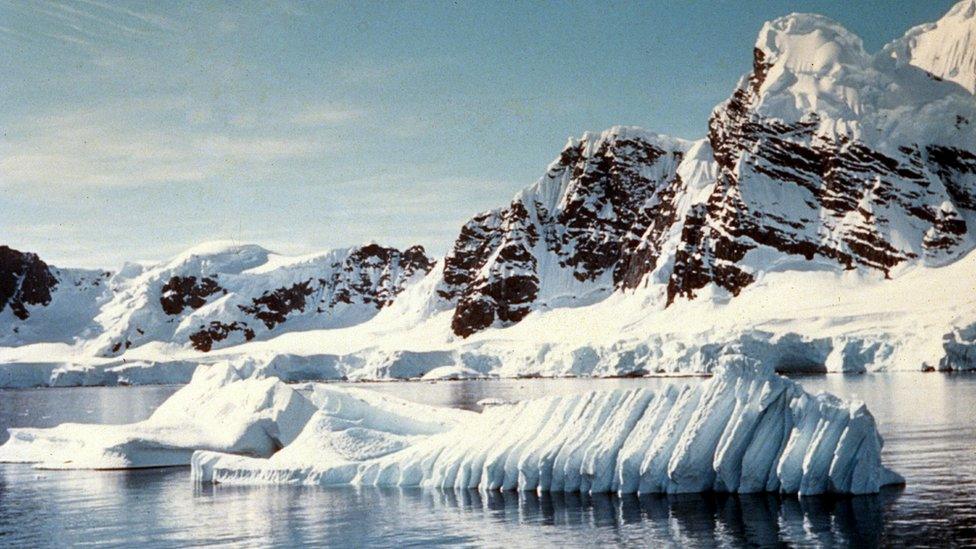Ice is melting across the globe at a faster rate than before
- Published
- comments

The rate that ice is melting across the planet is speeding up, according to a new study which compares ice melting rates from the 1990's to 2017.
According to the study, the Earth has lost 28 trillion tonnes of ice between 1994 and 2017, which is the equivalent to a sheet of ice that is 100 metres thick covering the entire UK.
Lead author, DR Thomas Slater said: "The ice sheets are now following the worst-case climate warming scenarios set out by the Intergovernmental Panel on Climate Change. Sea-level rise on this scale will have very serious impacts on coastal communities this century."
The study claims there has been a 65% increase in the rate of ice loss over the 23-year survey. You can learn more about how rising sea levels affecting coastal communities by watching Newsround's Fiji special here.
What impact can this have on the planet?
Earth is losing ice at a much faster rate, compared to previous years. According to the study, ice was melting at a rate of 0.8 trillion tonnes per year, compared to 2017 which saw a loss of 1.3 trillion tonnes of ice.
Rising atmospheric temperatures are the main cause for melting sea ice and mountain glaciers across the globe, whereas rising ocean temperatures are responsible for the melting of the Antarctic sheet.
Global ice melting can have a huge impact on coastal communities, people who live near the sea. There is also a threat to wipe out natural habitats by the coast that wildlife relies on.
Sea ice loss can have an indirect influence on sea levels Dr Isobel Lawrence said: "One of the key roles of Arctic sea ice is to reflect solar radiation back into space which helps keep the Arctic cool."
This means that as ice shrinks, more solar energy is being stored on Earth causing the Arctic to warm faster than elsewhere on the planet.
How was the study conducted?
The study is the first of its kind - by using satellite data to examine all ice disappearing on Earth.
The survey covers a huge amount of ice - 215,000 mountain glaciers spread around the planet, the polar ice sheets in Greenland and Antarctic, ice shelves that are floating around Antarctica and sea ice drifting in the Arctic and Southern Oceans.
Dr Thomas Slater said: ""Although every region we studied lost ice, losses from the Antarctic and Greenland ice sheets have accelerated the most."
The study concluded that half of all losses were from ice on land, including 6.1 trillion from mountain glaciers, 3.8 trillion tonnes from the Greenland ice sheet, and 2.5 trillion tonnes from the Antarctic ice sheet - contributing to global sea levels raising 35 millimetres.
Glaciers have contributed to almost a quarter of global ice losses, despite only contributing to almost a quarter of global ice losses over the study period.
- Published20 January 2020
- Published17 October 2018
